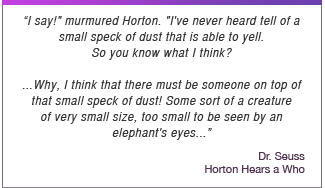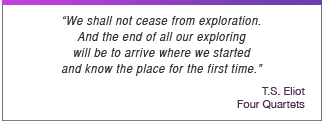 An
authentic view of science must embrace not only what we know,
but also how we’ve come to know it. Science is a wondrously
human journey requiring an artistic fusion of process
and content. Journey through the Universe programs
are designed to reveal the true nature of science to diverse
audiences. The story below tries to capture the essence of
this philosophy, and the Journey through the Universe
program delivery teams are masters at translating stories
like this to audiences of all ages, and immersing these audiences
in their own inquiry-based explorations of their community,
their world, and their Universe. An
authentic view of science must embrace not only what we know,
but also how we’ve come to know it. Science is a wondrously
human journey requiring an artistic fusion of process
and content. Journey through the Universe programs
are designed to reveal the true nature of science to diverse
audiences. The story below tries to capture the essence of
this philosophy, and the Journey through the Universe
program delivery teams are masters at translating stories
like this to audiences of all ages, and immersing these audiences
in their own inquiry-based explorations of their community,
their world, and their Universe.
The Story: For countless generations
we have explored our Earth, revealing its majesty, and the
unique interdependence of its systems that gave rise to life,
and sustained life for billions of years. We have also come
to realize the fragility of our world, and the stresses human
activity can produce on a planet-wide scale.
We have long known that Earth is a member of a planetary
family bound to the Sun, our star, and have long wondered
about the greater heavens and our place in space and time.
Since the advent of the space age, we have even traveled to
other worlds—with humans to the Moon, and with robots
to planets, moons, comets, and asteroids of the Solar System.
 For
400 years our telescopes on the ground—and now in space—have
peered beyond our Solar System, to planetary systems around
other stars, to stars in birth, and to the remains of stars
that died long ago. We have seen the structure of our city
of stars, the Milky Way galaxy, and revealed its stature in
the greater universe. And we are looking for others like ourselves—others
who also long to know of worlds beyond their own. For
400 years our telescopes on the ground—and now in space—have
peered beyond our Solar System, to planetary systems around
other stars, to stars in birth, and to the remains of stars
that died long ago. We have seen the structure of our city
of stars, the Milky Way galaxy, and revealed its stature in
the greater universe. And we are looking for others like ourselves—others
who also long to know of worlds beyond their own.
We have done amazing things. Yet to Earth, we are a species
of microbes. And Earth itself is a tiny world orbiting the
Sun—just one small star in a galaxy of 100,000,000,000
stars. Our galaxy, the Milky Way, is itself just one of 100,000,000,000
galaxies in the miniscule portion of the Universe we are able
to see. These are precious few words that frame the nature
of our existence—and our capabilities. We have
the ability to know all this.
 Driven
by innate human curiosity, and hard work embraced as a labor
of love, generations past endeavored to reveal the nature
of home. Now, standing on the shoulders of those
past generations, we see the majesty of the Universe. And
while we may seem small in its shadow, beauty has nothing
to do with size. We are integrally connected to the Universe,
and it to us. Driven
by innate human curiosity, and hard work embraced as a labor
of love, generations past endeavored to reveal the nature
of home. Now, standing on the shoulders of those
past generations, we see the majesty of the Universe. And
while we may seem small in its shadow, beauty has nothing
to do with size. We are integrally connected to the Universe,
and it to us.
It is also true that what we see of the Universe is seen
through a fog of still missing understanding. Surely most
of its secrets remain to be revealed by future generations.
So to ensure the remarkable legacy of human exploration, every
generation must be inspired to learn what we know of our world
and the Universe, and how we have come to know it
 This
is the story of our existence—a race of explorers, 6
billion tiny souls strong. It is a story that ignites wonder
about the Universe, and a sense of pride in our ability to
reveal its nature through both human imagination and ingenuity.
It is a story that humbles us, and brings a sense of humility
to our lives. It is a journey that forever changes one’s
perspective of home. This
is the story of our existence—a race of explorers, 6
billion tiny souls strong. It is a story that ignites wonder
about the Universe, and a sense of pride in our ability to
reveal its nature through both human imagination and ingenuity.
It is a story that humbles us, and brings a sense of humility
to our lives. It is a journey that forever changes one’s
perspective of home.
Dr. Jeff Goldstein
Program Director, Journey through the Universe
Center Director, National Center for Earth and Space Science
Education, USRA |
